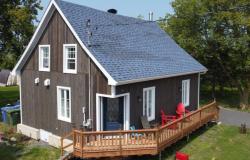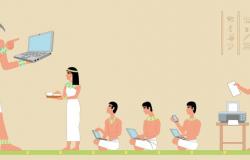MeteoAtWork: this is the name of a brand new application for smartphones, intended to protect workers in the event of episodes of high heat. This digital tool is the result of tripartite work carried out by the Cantonal Office of Inspection and Labor Relations (OCIRT) and the social partners since last summer.
“In August, there was a heat wave which had not been predicted and this was complicated for businesses and employees, there was a need for clarity” as to the measures to be taken, explained Thursday Delphine Bachmann, State Councilor in charge of the Department of Economy and Employment. “We realized that the tools available were not adequate,” said Christina Stoll, director of OCIRT, describing tables that were complex to interpret.
Developed and updated with data from MétéoSuisse for the Geneva region, the app allows you to view the situation hour by hour for the day, as well as for the following four days. Thermal stress thresholds, from 1 to 5, indicate which measures to put in place: from the distribution of sun cream to the cessation of activities.
To assess thermal stress, two factors are taken into account, explained Christina Stoll: weather conditions (sunshine, temperature, humidity) and working conditions (intensity of the task, clothing worn, equipment or exposure). Among the parameters to be entered are different trades (welding, concreting, etc.): “It is an advantage for a site manager who must manage several types of activities, for example,” underlined Julien Dubouchet Corthay, director of the OCIRT labor inspection.
Both employers and unions applaud the arrival of this new tool. “This allows employers to have predictability and it makes their task easier,” declared Pierre-Alain L’Hôte, president of the Union of Geneva Employers’ Associations. Before, we had a directive from the State Secretariat for the Economy (SECO) dating from 2007 and a cantonal directive to apply it, it was not easy for companies.”
Davide De Filippo, president of the Geneva Union Action Community, said he hoped that this app “facilitates the interpretation and understanding of the risks and measures to be applied and that we will no longer see what we saw in the summer past or previous ones, with situations on certain construction sites where there was a danger to the health of workers.
If the tool is above all preventive (and not obligatory), it will make it possible to “take sanctions more easily”, according to Julien Dubouchet Corthay. For example, if threshold 4 is reached and no plan has been put in place, he illustrated. “Companies will have more ability to do well,” added Pierre-Alain L’Hôte. And for the worker, “it will be easier to check if there are measures taken and possibly alert the union or the OCIRT,” said Davide De Filippo.
For the moment, MeteoAtWork concerns outdoor work, but there are plans to develop it for indoor work. According to Delphine Bachmann, this pilot project is a first in Switzerland, but it could be taken up elsewhere: “I know that other cantons are watching us with interest and I hope with success.”






